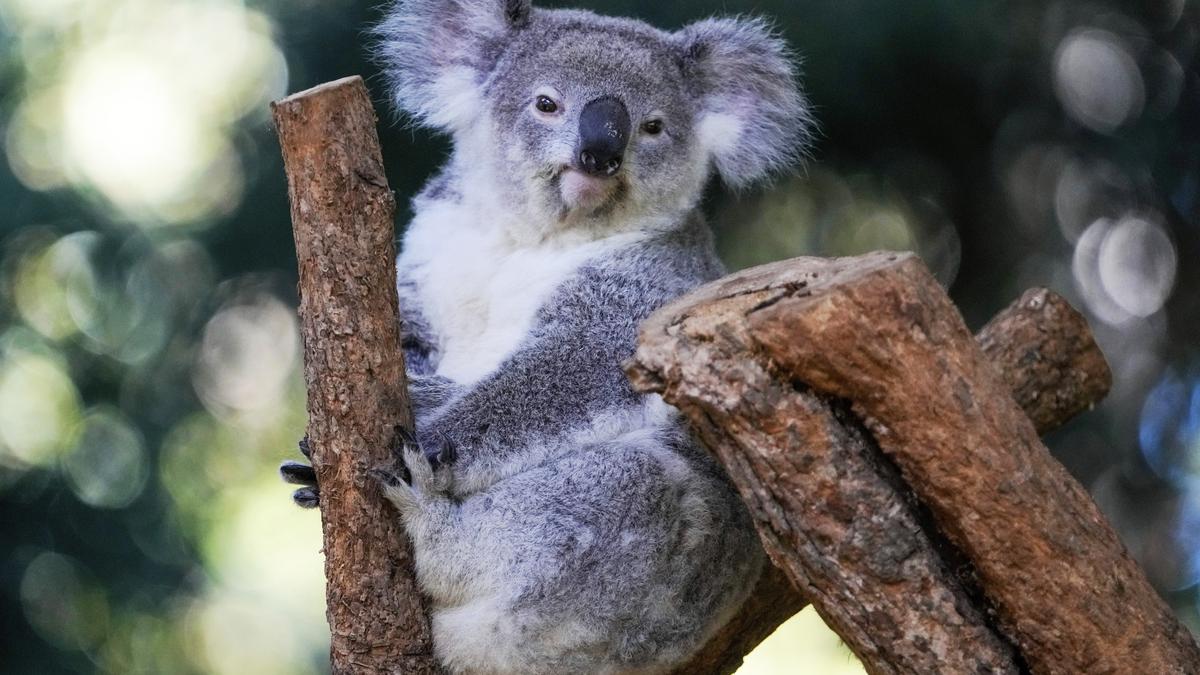Context:
Australia recently approved the world’s first vaccine aimed at protecting koalas from Chlamydia, a bacterial disease that has severely impacted their populations. This vaccine aims to reduce the disease’s impact by improving immunity in wild populations of koalas, potentially reversing population declines caused by infection.
About the Koala:
The koala (Phascolarctos cinereus), often colloquially called the “koala bear,” is an arboreal herbivorous marsupial endemic to Australia.
· It is the sole surviving member of the family Phascolarctidae and shares a close evolutionary relationship with wombats. Koalas are primarily solitary animals, coming together only during the breeding season.
· Adapted to a tree-dwelling lifestyle, koalas spend the majority of their time resting and feeding on eucalyptus trees.
· Their paws are uniquely equipped with two opposing thumbs, an evolutionary trait that enhances their ability to grasp and climb tree trunks efficiently.
Distribution and Habitat:
Koalas inhabit the eastern and southeastern parts of Australia, including Queensland, New South Wales, Victoria, and southeastern South Australia.
Their preferred habitats range from open forests to woodlands, spanning diverse climatic zones from tropical to cool temperate areas.
Diet and Ecology:
Koalas are folivores, relying almost exclusively on eucalyptus leaves for nutrition. This specialized diet is low in calories and requires the koala to conserve energy by sleeping up to 18–22 hours a day.
Conservation Status and Threats:
According to the International Union for Conservation of Nature (IUCN), the koala is currently classified as Vulnerable. Their populations have suffered steep declines due to a combination of threats:
- Habitat Loss: Urbanization, deforestation, and land clearing have drastically reduced suitable habitats.
- Climate Change: Increased frequency of droughts and bushfires affect food availability and survival.
- Road Accidents: Collisions with vehicles are a significant cause of mortality.
- Disease: The most alarming threat comes from chlamydial infections caused by Chlamydia pneumoniae and Chlamydia pecorum bacteria.
About Chlamydia:
Chlamydia is a pervasive disease among koalas, transmitted through mating, infected discharges, and from mother to joey at birth.
· Symptoms range from eye infections that cause blindness to urinary tract problems and infertility.
· Infected koalas often become weak and dehydrated, making them more susceptible to predators and environmental stresses such as bushfires.
Conclusion:
The koala is an emblematic species of Australia’s unique biodiversity but remains vulnerable due to multiple anthropogenic and natural threats. The introduction of a chlamydia vaccine offers hope but must be supplemented by broader conservation efforts focusing on habitat protection, reducing human-wildlife conflict, and climate resilience.







